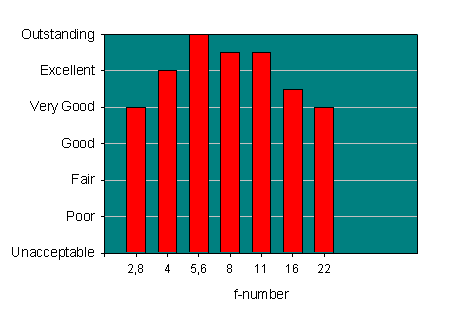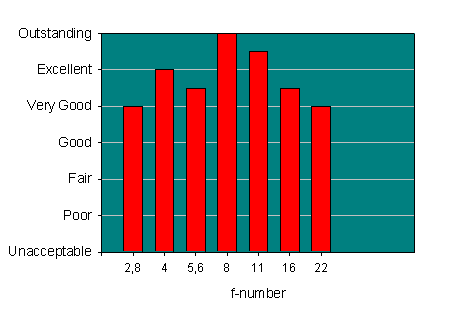| The Long March Towards
Revolution: AFS 70-200 mm f/2.8 G ED IF VR Nikkor
Reviewed |
|
|
| by Bjørn
Rørslett |
|
3.
Optical Performance
Sharpness is traditionally one of the more
important criteria for photographic lenses. We all want our
lenses to be tack sharp, period end period. Yet sharpness by
itself cannot guarantee anything, and I repeat any thing, in
terms of the ensuing pictorial outcome. The world is flooded with
sharp, dull, and uninspiring images, simply because the
photographer believed his job only was to press the button and
let the camera and lens do the rest. This is a paradox the
handling of which each and every one of us has to balance in our
own chosen manner.
I for one strive for visual impression -
not visual accuracy - in my photography, so spend considerable
time on assigment to circumvent restrictions imparted by a dull
photographic life-likeness. I do care about lens sharpness by all
means, but not as the panacea to solve all photographic problems.
Commitment to the process of creating images will outperform any
MTF plot any time. It's nice to have a sharp lens but better
still to know to which ends it can best be used. Oh well, I
continue to evaluate visual quality by shooting test pictures of
brick walls outside my office, I always have and probably always
shall do assessments this way. At least this procedure provides
me with a guideline as to how the lens performs. I always cross
reference my observations with original slides (or files) from
similar lenses so to have a concistency on my rankings.
After a few day's worth of testing, it
became painfully obvious that my D1X had developed a severe
"back-focus" issue. Critical sharpness simply was not
present on my test images unless the lens was stopped down beyond
f/11. Initially, I suspected the lens itself might be the culprit
causing of unsharpness so repeated painstakingly all my test
shots (hundreds of them) with my D1H and was relieved - and
saddened - by the fact that all of these were in sharp focus, as
they should. My D1X eventually was revived in the premises of my
Nikon repair shop and enabled me to finalise my sharpness tests.
For what they are worth, they are depicted below,
Subjective
Evaluation of the AFS 70-200 mm f/2.8 G VR ED-IF Nikkor
(for test
setup, and criteria, see here. Remember these values give qualitative -
not quantitative - data, and thus averaging the values is
meaningless)
|
 |
| Performance at 70
mm |
 |
| Performance at 200
mm |
| All tests
obtained with Nikon D1X using NEF raw files processed in
Bibble 3.04. Lens mounted on a Sachtler ENG 2 CF carbon
tripod with Burzynski head. |
Overall the AFS 70-200 mm f/2.8 lens
delivers an excellent image quality across its entire focal
range. The slight drop noted at f/5.6 towards 200 mm might be a
quirk particular to my lens sample and should not cause any major
concern. Since I only had a single lens available for testing,
the deviation has no statistical foundation on its own either.
Only when I can reproduce wiggles like this with other lenses
(such as I did on samples of the 400/3.5 Nikkor, for example) do
I put any emphasis on them. I would characterise the 70-200 VR as
giving professional class performance at all focal lengths.
The decline in performance at smaller
f-numbers is inherent in all lenses and is caused by diffraction.
If anything, image quality of the VR 70-200 hold up better than
expected when the lens was stopped well down.
Chromatic aberration (CA) was virtually
absent from any of the brick wall test images at any aperture and
focal setting. This in its turn resulted in a high-contrast
rendition with vibrantly satured colours, typical of the best of
the optics in which ED glass is employed.
Illumination was even across the entire
digital frame at f/2.8 at all focal settings, so corner light
fall-off was absolutely negligible. I guess there may be some
extreme corner fall-off with the lens set wide open on an F5,
however (I no longer use film for ordinary testing).
Geometric distortion is of the barrel type
at 70 mm and is clearly visible there. As you zoom the lens to
longer focal lengths, distortion is reduced and around 105 mm you
have a lens eminently suitable for architecture work.
Predictably, at 200 mm there is some, but not excessive,
pincushion distortion.
| The Long March Towards
Revolution: AFS 70-200 mm f/2.8 G ED IF VR Nikkor
Reviewed |
|

